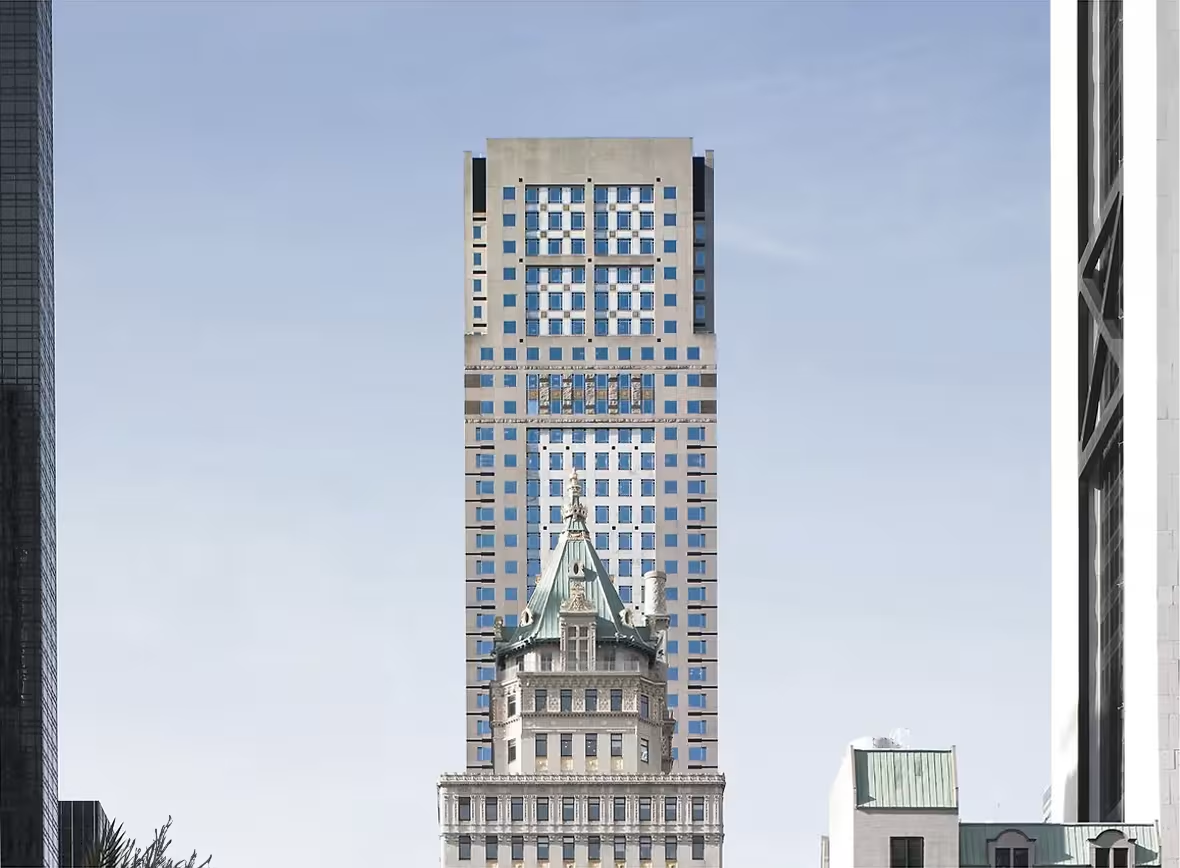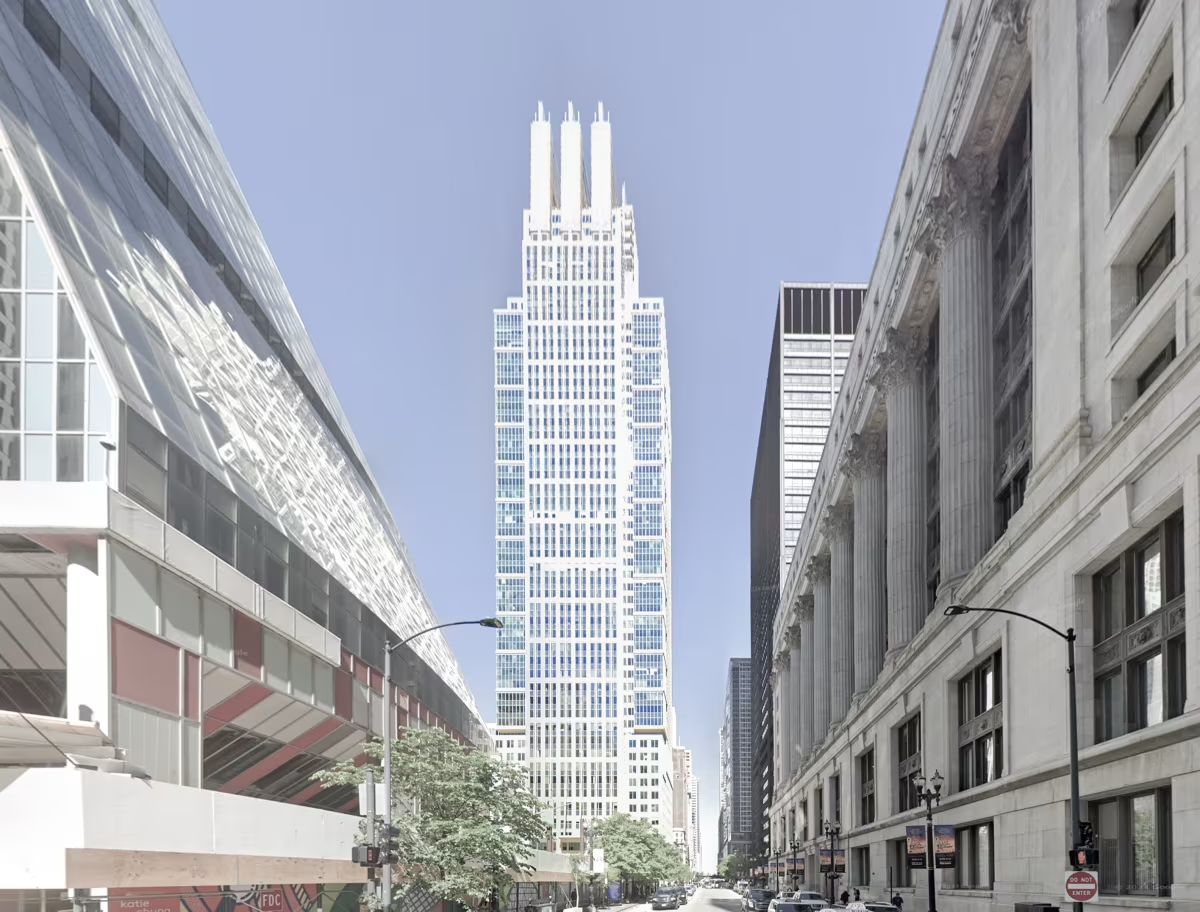712 Fifth Avenue Building vs Grant Thornton Tower


Comparing the 712 Fifth Avenue Building and the Grant Thornton Tower is an interesting exercise, because even though they are located in different cities (New York, NY and Chicago, IL), both were designed by Kohn Pedersen Fox Associates and finished within within 2 years of each other. This gives us the chance to see how the same architect's ideas were expressed in different urban contexts almost simultaneously.
Height & Size
These two towers present an interesting contrast in their proportions. The Grant Thornton Tower rises higher at 755ft (230m), while the 712 Fifth Avenue Building reaches 650ft (198m). However, the 712 Fifth Avenue Building accommodates more floors with 52 levels above ground, compared to 50 floors in the Grant Thornton Tower.
This suggests different approaches to interior space design. The Grant Thornton Tower has an average floor-to-floor height of approximately 4.6m, while the 712 Fifth Avenue Building has more compact floors averaging around 3.8m each. The taller building's more generous floor heights might indicate grander interior spaces, higher ceilings, or different programmatic requirements.
These different proportions likely reflect the specific needs each building was designed to serve, whether driven by zoning regulations, client requirements, or the intended use of the spaces within. The contrast shows how architects can achieve different spatial experiences even when working with similar overall building scales.
Architectural Style
Both the 712 Fifth Avenue Building and the Grant Thornton Tower were designed in line with the aesthetic conventions of the Postmodernism style.
The Grant Thornton Tower was designed at a moment when the Postmodernism style was already in decline, making it more of a lingering expression of the movement. In contrast, the 712 Fifth Avenue Building was built when the style still carried greater cultural weight.
Uses
Both the 712 Fifth Avenue Building and the Grant Thornton Tower were designed to serve as commercial towers, and that has remained their main use since their completion, serving similar roles in the urban fabric.
Structure & Facade
Both towers share the same structural solution, a Frame system.
A frame structure uses a grid of columns and beams to carry the building's loads. This frees the walls from structural duties, allowing for flexible floor plans and larger windows.
However, when it comes to the facade, both buildings use different approaches. The 712 Fifth Avenue Building uses a Masonry facade, while the Grant Thornton Tower uses a Curtain Wall facade.
A Masonry facade like the one seen in the 712 Fifth Avenue Building features a heavy masonry skin that gives it a more clasical look, while a curtain-wall facade like the one seen in the Grant Thornton Tower uses a lightweight glass curtain wall hung from the structure.
| 712 Fifth Avenue Building | Grant Thornton Tower | |
|---|---|---|
| Kohn Pedersen Fox Associates | Architect | Kohn Pedersen Fox Associates |
| 1988 | Construction Started | 1990 |
| 1990 | Year Completed | 1992 |
| Postmodernism | Architectural Style | Postmodernism |
| Commercial | Current Use | Commercial |
| 52 | Floors Above Ground | 50 |
| 198 m | Height (m) | 230 m |
| 43,900 m² | Usable Area (m²) | 105,166 m² |
| 10 | Number of Elevators | 23 |
| Frame | Structure Type | Frame |
| Steel | Vertical Structure Material | Reinforced Concrete |
| Concrete And Steel | Horizontal Structure Material | Reinforced Concrete |
| Yes | Facade Structural? | Yes |
| Solomon Equities, And A. Alfred Taubman | Developer | Linpro Company |
| Severud Associates Consulting Engineers | Structural Engineer | Severud Szegezdy Associates |
| NY | State | IL |
| New York | City | Chicago |
| 712 Fifth Avenue | Address | 161 171 North Clark Street |